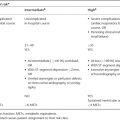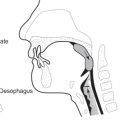Overview of Diarrhoeal Illness
Although the definition of diarrhoea appears clear, there are specific parameters that need to be met prior to making a diagnosis. According to Gerding et al.,1 there are three separate parameters which include new onset of >3 partially formed or watery stools over a 24 hour (h) period, ≥6 watery stools over 36 h or ≥8 unformed stools over 48 h. Once the diagnosis has been made, diarrhoea can be further classified as acute or chronic. Acute diarrhoea is diarrhoea lasting for 14 days or less. Persistent diarrhoea lasts for longer than 14 days. Chronic diarrhoea is diarrhoea lasting for longer than 1 month. The consequences of fluid and electrolyte loss are especially concerning for elderly adults. Furthermore, the management of diarrhoea can differ from the general adult population due to various comorbidities, living arrangements and inherent immune susceptibility that exist among elderly adults.
Diarrhoea is a common cause of death worldwide and one of the most common infectious illnesses in elderly nursing home patients.2 This is particularly important in the treatment of the elderly as there is an inherent decline in immune defences which are often compounded by many close contacts derived from living in long-term care facilities. Once diarrhoea has been distinguished from incontinence and faecal impaction, one can further classify the type of diarrhoea. In addition, diarrhoea presenting with incontinence can represent a decompensation of existing poor gastrointestinal (GI) function in the elderly.3 The subdivisions of acute and chronic diarrhoea can be further broken down into more categories according to the cause and presentation. Acute diarrhoea is usually infectious in nature, but can also be caused by medications, nutrition, diverticular disease and ischaemia.3 Chronic diarrhoea can be further subclassified as secretory or watery, osmotic, fatty or bloody (inflammatory or exudative).3
Some elements of the GI tract, for example, immune function, change with age; a healthy ageing GI tract’s absorptive capacity, mucosal anatomy and motility should be unchanged. Therefore, even in the elderly, the main goal in diarrhoeal management remains the identification of the aetiology of diarrhoea and preventing dehydration.
Acute Diarrhoea
Infectious
Infectious diarrhoea is the most common cause of diarrhoea. The infectious causes of diarrhoea include viruses, bacteria and parasites.2 The most common viruses include Norwalk virus, rotavirus and calicivirus. The bacteria include Clostridium difficile, Clostridium perfringens, Campylobacter, Escherichia coli, Salmonella, Shigella, Staphylococcus and Vibrio. Lastly, the parasites include Giardia lamblia, Entamoeba histolytica, Cryptosporidium and Cyclospora.2, 3
C. difficile is the most common healthcare infection causing diarrhoea.4 The organism is a spore-forming Gram-positive anaerobic bacillus with two exotoxins. Toxin A is an enterotoxin and toxin B is a cytotoxin. There are currently hypervirulent strains that are identified as B1, NAP1 and ribotype 027/toxinotype III. These hypervirulent strains produce 23 times more toxins A and B, which causes increased resistance to treatment.5 Similarly to less virulent strains, they are associated with fluoroquinolone and cephalosporin use. The rate of C. difficile colonization in LTCF is 4–20% and outbreaks are severe.6 In 1986, Bender et al. found 19 deaths from the 49 cases of infection in an outbreak in a Baltimore nursing home.7 The outbreak lasted for 7 months despite precautions, antimicrobial use restrictions and treatment. C. difficile-associated disease (CDAD) is defined as diarrhoea, per previously defined criteria, pseudomembranes or stool toxin A or B or stool culture positive for toxin-producing C. difficile and no other recognized aetiology for diarrhoea.1 Although the predominant presentation is with diarrhoea, ileus or absence of diarrhoea can occur in less than 1% of presentations. Therefore, with increased clinical suspicion, a toxin assay or culture must be performed on non-diarrhoeal stool. Some sources estimate that >10% of hospitalized patients are colonized with C. difficile.1 A history of treatment with antimicrobial or antineoplastic agents within the previous 8 weeks is present in virtually all patients, but is not included in the case definition to avoid bias and to allow comparison of antimicrobial use as a factor. In clinical practice, antimicrobial use is considered to be part of the operative CDAD definition. A response to specific therapy for CDAD is suggestive of the diagnosis and can be confirmatory.1 Direct visualization using endoscopy detects pseudomembranes only 51–55% of the time.
CDAD is associated with proton pump inhibitor therapy (PPI). Akhtar and Shahee8 studied the incidence and association of C. difficile-associated diarrhoea and PPI. The study found a significant association of C. difficile associated with antibiotics or chemotherapy [odds ratio (OR) = 2.3, 95% confidence interval (CI) = 1.5–3.7] and with PPI use (OR = 2.0, 95% CI = 1.6–2.6).
Brandt et al.9 noted in 1999 that the response to treatment of CDAD was similar in groups less than and older than 60 years of age. In addition, the associated mortality between the groups was also the same. However, owing to the modest sample size of 89 CDAD patients in the study, there may have been insufficient statistical power to detect small yet meaningful differences. The older group was significantly more likely to have an elevated white blood cell count (>10 400 cells mm−3) and nosocomial infection after >2 weeks of hospitalization. Both exposures from increased hospital stay or healthcare-associated contacts and also susceptibility may account for the increased rate of CDAD in the elderly.
The other bacterial and parasitic causes of diarrhoea and treatments are listed in Table 26.1. These infections can usually be distinguished by the type of diarrhoea, watery or bloody, or the time to diarrhoea onset. The invasive or inflammatory causes of diarrhoea include enteroinvasive E. coli, Shigella and E. histolytica. The Shiga-like toxin and Shiga toxin-producing organisms include E. coli and Shigella, respectively. While E. coli usually produces diseases at between 10 h and 6 days, E. coli O157:H7 can take up to 4 days to produce disease. Shigella dysenteriae can take up to 1 week to produce disease. Salmonella, Yersinia enterocolitica and Campylobacter produce disease 12–48 h after ingestion. Akhtar2 reported a Maryland nursing home resident outbreak of Salmonella with a 24% rate of death in those affected.
Table 26.1 Infectious diarrhoea.
| Pathogen | Medication/therapy |
| Bacteria | |
| Clostridium difficile | Metronidazole or vancomycin p.o. |
| Campylobacter jejuni | Erythromycin or azithromycin p.o. |
| Salmonella typhi | Ofloxacin or norfloxacin p.o. |
| Shigella | Trimethoprim–sulfamethoxazole or ofloxacin |
| Vibrio cholerae | Tetracycline |
| Parasitic protozoa | |
| Cryptosporidium parvum | Nitazoxanide p.o. |
| Entamoeba histolytica | Metronidazole then iodoquinol (diiodohydroxyquinoline) p.o. |
| Giardia lamblia | Metronidazole, furazolidone or nitazoxanide p.o. |
Adapted from Refs 2 and 19.
Other infectious causes of diarrhoea are viruses, including Norwalk, Norwalk-like virus and rotavirus. These viruses are common causes of diarrhoea in the paediatric population. However, they have been noted to cause epidemic diarrhoea in the nursing home in The Netherlands10 and Spain.11 The viruses differ by the predominant time of year for presentation, with rotavirus causing disease during the cooler months. They are both acquired by the faecal–oral route; therefore, direct contact or contact with contaminated food and water is the most likely means of spread. A retrospective cohort study of nursing home residents and staff between December 1998 and January 1999 in the Rotterdam region found 107 attacks of acute onset diarrhoea or vomiting in the 120 residents and 102 staff members studied.10 The resident gastroenteritis attack rate was 62% without any significant difference among number of room-mates or eating place. The study found that the nursing home staff contributed to the spread of illness. Those residents who were infected were older (77 versus 72 years, p = 0.04). In addition, the rate of attack increased with age, which was postulated to be related to mobility, intensity of nursing care and immune health.
Diagnosis of infectious diarrhoea should be guided by the initial presentation and history. Without fever, signs of dehydration, bleeding, abdominal pain or coexisting disease, supportive care without further testing can be appropriate.2 However, the presence of the aforementioned symptoms and disease states or lack of resolution after supportive therapy for 48 h warrants further investigation. Depending on the clinical suspicion for C. difficile, stool toxin assays should be performed. In addition, in order to control disease dissemination, hand hygiene, barrier protection and environmental precautions (cleansing, disinfecting and disposables) are imperative. Specific antibiotic and antiparasitic treatment options for infectious causes of diarrhoea are included in Table 26.1.
Bloody
A common cause of lower GI bleed is diverticula. Diverticular colitis can be the cause of both chronic and acute diarrhoeal disease. It is believed the 60% of 80-year-olds have diverticulosis. Estimates indicate that 10–30% of GI bleeds are from diverticula.12 Bleeding is caused by non-circumferential rupture of the underlying vasa rectum.12 In addition, the most common life-threatening bleeds are lower GI diverticular bleeds. Risk factors of diverticular bleeds include hypertension, anticoagulation, diabetes mellitus and ischaemic heart disease.12 Bloody diarrhoea also occurs with ischaemic colitis, which will be considered in the next section.
Specific treatment for bleeding diverticula includes vasopressin infusion, embolization and surgery. According to Lewis,12 vasopressin infusion via angiogram is 36–90% effective in the initial treatment of diverticular bleeds and 22–71% in recurrent bleeding. In addition, the success rate for selective embolization was noted to be 71–90%, with a relatively lower rebleeding rate than vasopressin infusion at 15–20%.
Ischaemic
Ischaemic colitis usually presents with colicky lower abdominal pain, diarrhoea, vomiting or rectal bleeding.13
Stay updated, free articles. Join our Telegram channel

Full access? Get Clinical Tree








